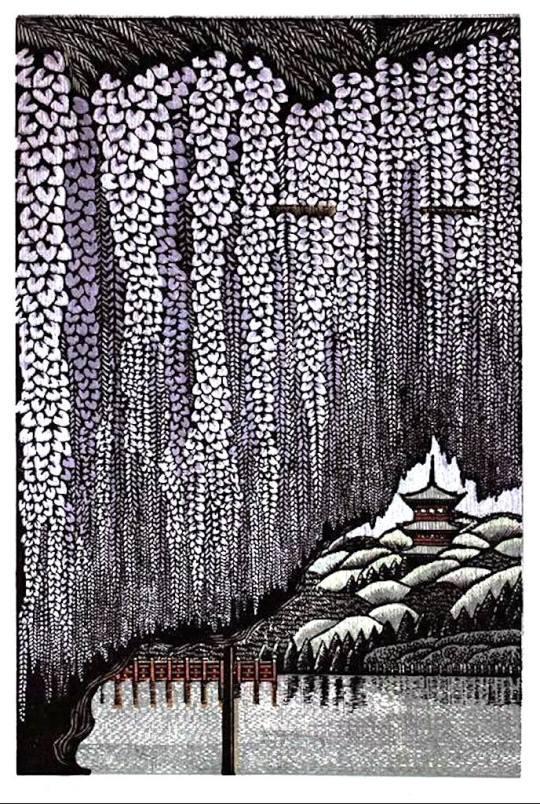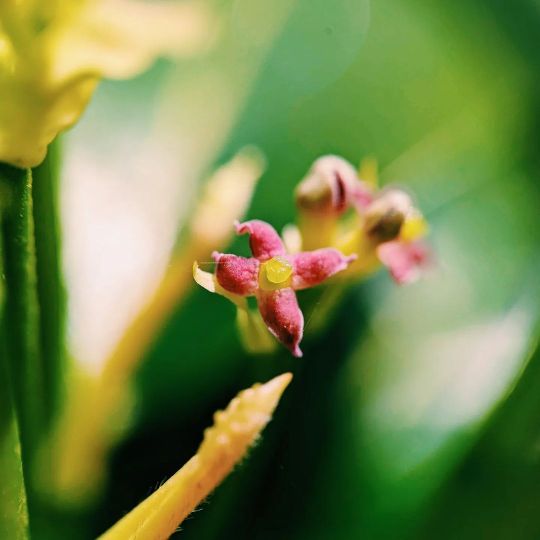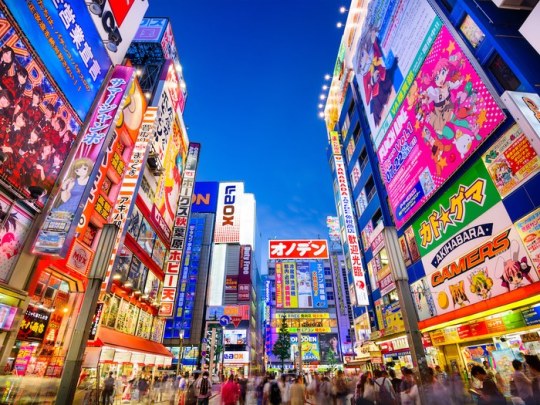#Sankeien Japanese garden
Explore tagged Tumblr posts
Text
Yokohama Sankeien Japanese garden,Chinatown,Lunch, Costco, Asakusa 1 day tour!!
Yokohama Sankeien Japanese garden,Chinatown,Lunch,Costco, Asakusa 1 day tour!! Hi I’m Nobu, I like traveling overseas and in Japan, visited 26 countries! I’m a National Government Licensed Guide Interpreter of English for 10 years. For the people who are interested in and planning trip to Japan ,I show you hidden local information which you have never seen and heard of through books and…

View On WordPress
1 note
·
View note
Text

Cherry blossom in the Sankeien Garden, Yokohama, Japan
Japanese vintage postcard
#tarjeta#postkaart#sepia#japan#carte postale#ansichtskarte#yokohama#sankeien#garden#briefkaart#blossom#photo#photography#postal#postkarte#vintage#the sankeien garden#japanese#postcard#historic#cherry#ephemera
13 notes
·
View notes
Text
10 Exquisite Destinations to Explore in Yokohama, Japan
When the allure of Japan beckons, travelers often find themselves enticed by the captivating blend of traditional charm and modern innovation. While Tokyo casts its shimmering skyscrapers and neon glow, a hidden gem awaits just a stone's throw away – Yokohama. Renowned for its maritime heritage, stunning landscapes, and cultural marvels, Yokohama offers an experience that seamlessly fuses history and modernity. Embark on a journey as we unveil the ten finest destinations that Yokohama has to offer.

Sankeien Garden: Where Time Stands Still
Step into a realm of serenity at Sankeien Garden, an oasis of tranquility that transports visitors to the elegance of the Edo period. Adorned with meticulously preserved historic buildings, lush flora, and meandering pathways, this haven of beauty radiates the essence of Japanese aesthetics.
Yamashita Park: A Waterfront Marvel
Behold the majestic panorama of Yokohama Bay at Yamashita Park, a verdant waterfront expanse that offers a respite from the urban bustle. As sea breezes gently embrace you, the iconic Hikawa Maru ship and the vibrant Marine Tower stand as silent witnesses to maritime history.
Landmark Tower: Ascending Beyond Borders
Elevate your experience at the Landmark Tower, an architectural triumph that pierces Yokohama's skyline. Gaze in wonder at the metropolis from the observation deck, or indulge in retail therapy at the sprawling shopping complex – all beneath one soaring roof.
Red Brick Warehouse: Fusion of Commerce and Culture
Immerse yourself in the allure of history at the Red Brick Warehouse, a duo of 20th-century edifices that now house a treasure trove of boutiques, dining establishments, and cultural events. This beguiling blend of past and present serves as a testament to Yokohama's transformation over the ages.
Yokohama Chinatown: A Gastronomic Odyssey
Embark on a culinary expedition through the vibrant Yokohama Chinatown, a lively district that tantalizes taste buds with an array of delectable Chinese cuisines. From intricate dim sum to fiery Szechuan delicacies, this culinary haven beckons gastronomes from near and far.
Hakkeijima Sea Paradise: Subaquatic Symphony
Dive into a world of aquatic marvels at Hakkeijima Sea Paradise, a marine-themed amusement park that merges entertainment and education. Discover the enigmatic dance of dolphins, the grace of jellyfish, and the vibrant colors of coral reefs – a celebration of oceanic wonders.
Mitsuike Park: Nature's Resplendence
Nature enthusiasts find solace at Mitsuike Park, a lush sanctuary boasting three mesmerizing ponds surrounded by diverse flora and fauna. Stroll along serene trails, listen to the symphony of birds, and witness the ever-changing canvas of seasonal hues.
Nogeyama Zoo: A Biodiverse Haven
Delve into the animal kingdom at Nogeyama Zoo, a compact yet comprehensive establishment that houses an assortment of creatures from around the globe. Encounter exotic species, including red pandas, capybaras, and rare avian wonders, fostering an appreciation for Earth's biodiversity.
Yokohama Museum of Art: A Cultural Voyage
Satisfy your cultural yearnings at the Yokohama Museum of Art, an architectural masterpiece that showcases an eclectic collection of Japanese and Western artistic treasures. Engage with avant-garde exhibitions, classic compositions, and thought-provoking installations.
Kanazawa Bunko: Bibliophile's Haven
For the literary connoisseur, Kanazawa Bunko stands as a testament to knowledge and heritage. This repository of ancient texts and manuscripts beckons intellectuals and curious minds alike, offering a glimpse into Japan's intellectual evolution.
In the heart of Yokohama's multifaceted tapestry, these 10 best places to visit in Yokohama Japan weave an enchanting narrative that showcases the city's rich history, cultural diversity, and contemporary allure. As you traverse these remarkable locales, each step whispers tales of a bygone era and whispers of a promising future, a harmonious symphony that defines Yokohama's unique essence.
1 note
·
View note
Photo

Jumy-M Choshukaku / 緑深き庭園
215 notes
·
View notes
Photo

The Kanshinbashi Bridge (foreground) was built in 1334 moved here from Osaka. The main hall of the former Tomyoji Temple (background) was built in 1457 and moved here from Kyoto. ISO 400 at ƒ/7.1 for 1/160 sec. #SankeienGarden #KanshinBridge #TomyojiTemple #forest #autumn #AutumnLeaves #Yokohama #Japan #三溪園 #秋の紅葉 #林 #森 #紅葉 #横浜 #旧燈明寺本堂 #観心橋 #PentaxKS2
#garden#Japanese garden#Sankeien Garden#Kanshibashi#Kanshinbashi Bridge#Kanshin Bridge#Tomyoji Temple#historical park#historical building#Japanese park#Japanese traditional garden#Japanese traditional building#Yokohama#Japan#woods#forest#autumn#fall#autumn colors#autumn leaves#fall leaves#三溪園#秋の紅葉#林#autumn leave#森#紅葉#横浜#重要文化財#三重塔
15 notes
·
View notes
Photo

臨春閣 - Rinshunkaku by dAi_f
2 notes
·
View notes
Photo

such a beautiful autumn leaves 😆💗🙌🏾🍁🍂. . at the Traditional Japanese landscape garden 🇯🇵👘🏯🗻. . 日本に降り着いてまずは 空港近くの日本庭園で 紅葉を見ながらお散歩👣😉👍🏾✨. . 広島空港を利用するのは珍しいけど 空港のすぐ横に こんな綺麗な紅葉が見られる 場所があるんですよー🤓☝🏾✨. . . #japan #hiroshima #hiroshimaairport #sankeien #japanese #autumn #autumnleaves #autumncolors #landscape #garden #gardening #trip #travel #nofilter #日本 #ジャパン #🇯🇵 #広島 #日本庭園 #紅葉 #秋 というか #冬 #旅 #ファインダー越しの私の世界 #カメラ女子 #カメラ好きな人と繋がりたい #三景園 (三景園)
#japan#travel#🇯🇵#冬#広島#autumnleaves#旅#ファインダー越しの私の世界#カメラ女子#秋#hiroshima#trip#sankeien#gardening#landscape#紅葉#nofilter#autumncolors#japanese#日本#ジャパン#garden#autumn#hiroshimaairport#三景園#カメラ好きな人と繋がりたい#日本庭園
1 note
·
View note
Text
"Sankei-en Wisteria" (三渓園の藤), 2011, by Morimura Rei/Ray (森村 玲), a Tokyo based woodblock artist, born (in Tokyo) in 1948.
Sankei-en (三溪園; literally, the "Three Creeks Garden") is a traditional Japanese-style garden in Naka Ward, Yokohama, Japan, which opened in 1906Sankei-en was designed and built by Tomitaro Hara (原富太郎, 1868–1939), known by the pseudonym Sankei Hara, who was an affluent silk trader from Saitama Prefecture. Almost all of its buildings in the garden are historically significant structures bought by Hara himself in locations all over the country, among them Tokyo, Kyoto, Kamakura, Gifu Prefecture, and Wakayama Prefecture. Ten have been declared Important Cultural Property, and three more are Tangible Cultural Properties of Japan designated by the City of Yokohama.Badly damaged during World War II, the garden was donated in 1953 to the City of Yokohama, which entrusted it to the Sankeien Hosh��kai Foundation (三溪園保勝会, Sankeien Hoshōkai). Sankei-en was then restored almost to its pre-war condition.

#Sankei-en (三溪園; literally the Three Creeks Garden)#Wisteria (藤の花)#Morimura Rei/Ray (born 1948)#Japanese art#Japanese woodblock printmaking#Japan#jadedinjapanworld#Tokyo#Yokohama#Tara Tomitaro (1868-1939)
7 notes
·
View notes
Photo

Sankeien aka 'Three Creeks Garden"" was opened in 1906 and is a traditional Japanese garden. It was designed and built by Tomitaro Hara who was a silk trader. Almost all of the buildings inside are historically significant structures, having been brought by Hara from all over Japan. Ten of these buildings have been declared Important Cultural Properties. Badly damaged during WW2, the garden was donated to Yokohama, and restored to pre-war conditions. Sankeien has a total surface of 175 thousand square meters and features ponds, steams, undulating paths constructed by Hara himself, and a 3-story pagoda that was originally constructed in Kyoto in 1457. The garden took 6 years to build and was opened 2 years later. During Hara's lifetime the garden became a place for Meiji period artists. There is a lot of history in the park, so if you're a fan of history and natures it's a garden you shouldn't miss. Check out japancraze.com for all of your Japan needs!#jpncraze #japan #kanagawa #yokohama #wanderlust #travel #travelgram #sankeiengarden #history #garden #japanesegarden #history #日本 #旅行 #旅 #神奈川 #横浜 #三溪園 (at Sankeien Park) https://www.instagram.com/p/CSoi-XqH2n7/?utm_medium=tumblr
#jpncraze#japan#kanagawa#yokohama#wanderlust#travel#travelgram#sankeiengarden#history#garden#japanesegarden#日本#旅行#旅#神奈川#横浜#三溪園
1 note
·
View note
Link
1 note
·
View note
Video
Old tea house surrounded by Japanese maple trees par Ippei & Janine Naoi Via Flickr : This old tea house will be surrounded by red leaves of Japanese maple trees in early December.
#Sankeien#三渓園#Yokohama#Japanese garden#tea house#old#forest#lush#green#autumn#traditional#Japanese#Japan#momiji
969 notes
·
View notes
Photo

Sankeien Japanese garden by Raita Futo
1K notes
·
View notes
Photo

/Aucuba japonica/, アオキバ, Family Garryaceae It's been a while since the last plant post, so this time we're having two plants in the spotlight. First up is A. japonica, my first encounter with the family Garryaceae. This family of plants is distributed in warm, temperate/subtropical regions, and doesn't occur in the Philippines. The genus Aucuba itself is Native to East Asia, with the name being derived from the local アオキ葉 or アオキ. Aoki grow along shaded streams and moist thickets. Its variegated form is popular in gardens. The plant is distinguishable by its opposite, broadly lanceolate leaves with toothed margins and opposite veins. The stipules are large and also opposite [but unlike Rubiacs like coffee, not interpetiolar?]. Male and female plants in this family are separate, a condition called dioecy. Aoki flowers are arranged in cymes, and are 4-merous [having four of each part], with deep purple petals. The stamens of male flowers alternate with the petals. The ovaries of female flowers are inferior [positioned below the perianth]. Can you tell which of the photos is male or female? Floral formula Male: Ca4 Co4 A4 Female: B2 Ca4 Co4 G1inf Fruits are bright red; tantalizing but toxic! One of the Japanese garden plants closely related to Aoki is the Kousa (dogwood, Cornaceae). If you don't count gardenias and coffee. Scroll down my feed to find a related post! 🤣 Reference: Fell, Derek (1992). The essential gardener. Gramercy . . . . . . . . . . #spring #japan #aucuba #plantlove #plants #plantsofinstagram #vsco #garryaceae #gardens #sankeien #botanize (at 三溪園) https://www.instagram.com/p/Ch4j7mOhgpv/?igshid=NGJjMDIxMWI=
0 notes
Photo

Tomitaro Hara (1868-1939), a wealthy merchant and tycoon of the silk trade, originally built Sankeien Garden for his personal use. In 1914, he acquired an abandoned 3-story pagoda, which was originally built in 1457. Hara had it disassembled, shipped, restored, and reassembled in his garden. ISO 200 at ƒ/11 for 1/160 sec. #SankeienGarden #pagoda #forest #autumn #AutumnColors #AutumnLeaves#Yokohama #Japan #三溪園 #秋の紅葉 #林 #森 #紅葉 #横浜 #旧燈明寺三重塔 #PentaxKS2
#garden#Japanese garden#Sankeien Garden#pagoda#3-story pagoda#historical park#historical building#Japanese park#Japanese traditional garden#Japanese traditional building#Buddhist pagoda#Yokohama#Japan#woods#forest#autumn#fall#autumn colors#fall colors#autumn leaves#fall leaves#三溪園#秋の紅葉#林#森#紅葉#横浜#重要文化財#旧燈明寺三重塔#三重塔
16 notes
·
View notes
Text
JAPAN 2022
MAIN TOURIST DESTINATIONS FOR A TRAVEL TO JAPAN
Natural parks, high-end restaurants, and hot springs are among the top spots for tourists visiting Japan’s destinations. Buddhist and Shinto temples. Protected natural areas. Imperial castles that are intact despite being built thousands of years ago. Cherry blossoms.
GUYS IF YOU ARE INTERESTED READING MORE ABOUT THE SCI-FI COUNTRY THAT IS CALLED JAPAN YOU’LL GET MORE KNOWLEDGE BY CLICKING ON MY BLOG : https://thatelegantgirl.com/index.php/2022/06/08/15-most-beautiful-places-in-japan/
Tokyo, capital of Japan In Japanese, Tokyo means “the capital of the East”. Traveling to Japan without going to the capital is like visiting France without spending a few days in Paris: the experience is simply incomplete. Some say Tokyo never ends as it is one of the most metropolitan, diverse and convulsive cities in all of Asia.
Located in the Kantō region, it is the center of the commercial, political, cultural and culinary activities of the whole country. Therefore, among the tourist destinations, it is perhaps the most expensive of all. Since its founding in 1457 at the foot of Mount Fuji, it has witnessed the rise of dynasties and the fall of empires. As one of the strongest metropolises in the world, it is able to accommodate a wide range of tourism offers: Tokyo is there for everyone.
LOVELY PEOPLE IF YOU ARE INTERESTED ON READING VIDE VARIETY OF BLOGS FOR MORE VISIT MY WEBSITE :https://thatelegantgirl.com/
Among the most representative tourist attractions is undoubtedly the Imperial Palace. However, the city also has thousand-year-old sanctuaries and castles that have stood the test of time as if still in use. In the same way, it is recommended to visit the row of torii arches — ceremonial Shinto thresholds — lined up in the center of Kyoto.
Jigokudani Jigokudani Besides the hot mudflats that surround the area, Jigokudani is also known for the fiery rivers that flow through the forested areas. Even in the coldest season, the Oyunumagawa River keeps its warmth. Tourists can follow the course of the water for a fair distance and enter the clearings of the forest in the spring months.
In addition, it is possible to follow the ancient Japanese tradition of Ashiyu: a meditative practice of immersion in nature, in which the person places their feet in the warm waters of the flowing river. This experience is completely free as it preserves a sacred halo in the region’s oral tradition. The wooded trails that meander through the foothills of the mountains are accessible by ferry, which is a 20- to 30-minute ride across a lake.
IF YOU ARE SO KEEN TO KNOW WHICH ARE THE HAPPIEST COUNTRIES IN THE WORLD CHECKOUT MY BLOG . Sapporo While Sapporo is open to international tourism year-round, the city really comes into its own in winter. Due to the heavy snowfalls that cover the entire region — and much of the open, uninhabited countryside nearby — the Snow Festival is celebrated year after year.
For a whole week in February, professional sculptors from all over the world carry out their monumental projects on ice. Because of this, it’s common to see replica temples, manga characters, and other representations made entirely of snow. This tradition began in the 1950s but continues to this day with new technological adaptations that allow visitors deeper immersion.
Yokohama Yokohama is Tokyo’s most visited neighbouring city for international tourism. Some would say it’s a less tumultuous extension of the Japanese capital. Being on the coast, visitors spend the day at the beach. However, the destination is famous for the Ramen Museum and its amusement parks, as well as the business centers that made it grow.
It is easily accessible by train or bus as it is only 30 minutes from Tokyo Station. Many of the areas of tourist interest are within walking distance as the city as a whole is well connected and there are many public areas for pedestrians only. One of the most famous is the Sankeien Garden, designed by a wealthy silk merchant more than a century ago.

1 note
·
View note
